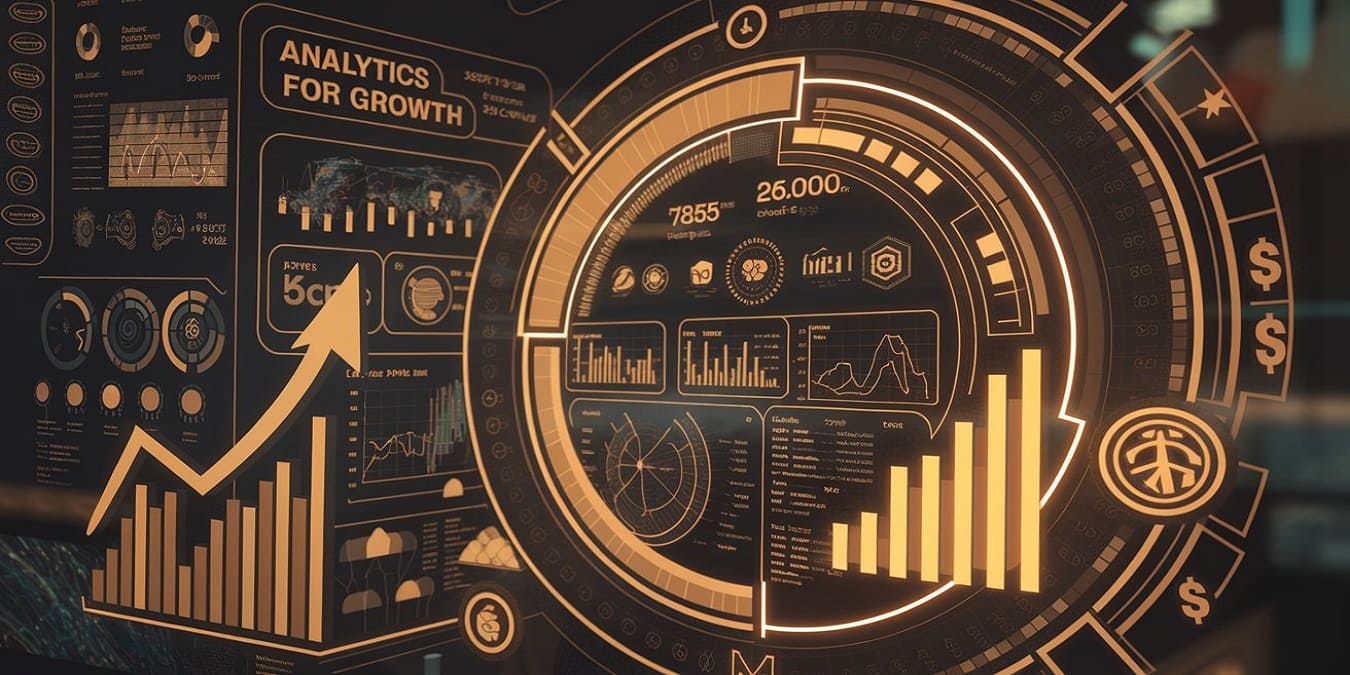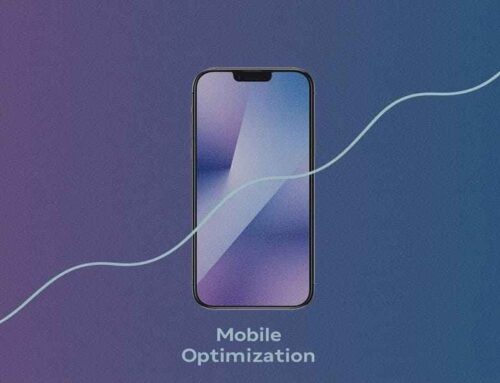
Analytics for Growth
What if you could unlock the secret to growing your business hidden in the data you already have? Sounds like a game-changer, right? The truth is, analytics for growth isn’t just a fancy term, it’s a proven strategy for turning raw data into actionable insights that drive revenue.
By leveraging data monetization, businesses can make smarter decisions, optimize operations and create new revenue streams.
In this comprehensive guide, we’ll explore how analytics for growth can transform your business, why data is the new currency and actionable strategies to help you turn data into dollars.
Whether you’re a small business or a large enterprise, these insights will help you harness the power of data to achieve sustainable growth.
Let’s dive in and discover how you can turn your data into a goldmine.
Why Analytics for Growth Matters
Before we get into the “How,” let’s talk about the “Why.” Why is analytics for growth so critical in today’s business landscape?
Data is everywhere. From customer interactions to operational metrics, businesses generate vast amounts of information every day. But here’s the catch: raw data is useless unless you know how to analyze and act on it. That’s where analytics for growth comes in. By turning data into actionable insights, you can:
- Make Smarter Decisions: Use data to guide strategy and reduce guesswork.
- Improve Efficiency: Identify inefficiencies and optimize processes.
- Boost Revenue: Uncover new opportunities for data monetization.
- Enhance Customer Experience: Personalize offerings based on customer behavior.
Now that we’ve established the “Why,” let’s explore the “How.” Here’s how you can use analytics for growth to turn data into dollars.
-
Collect the Right Data
The first step in analytics for growth is collecting the right data. Not all data is created equal and focusing on the wrong metrics can lead to wasted time and resources.
How to Collect the Right Data
- Define Your Goals: What are you trying to achieve? Increased sales? Better customer retention? Clear goals will guide your data collection.
- Identify Key Metrics: Focus on metrics that align with your goals, such as conversion rates, customer lifetime value or churn rates.
- Use the Right Tools: Invest in tools like Google Analytics, CRM systems or IoT sensors to gather accurate and relevant data.
For example, an e-commerce business might track website traffic, cart abandonment rates and customer demographics to understand buying behavior.
-
Clean and Organize Your Data
Raw data is often messy and unstructured. To make it useful, you need to clean and organize it.
Tips for Data Cleaning
- Remove Duplicates: Eliminate redundant data to ensure accuracy.
- Standardize Formats: Use consistent formats for dates, currencies and other variables.
- Fill in Gaps: Address missing data by using averages, estimates or predictive models.
For instance, a retail chain could clean its sales data by removing duplicate entries and standardizing product codes across all stores.
-
Analyze Data for Insights
Once your data is clean and organized, it’s time to analyze it for actionable insights. This is where analytics for growth truly shines.
Types of Data Analysis
- Descriptive Analytics: Understand what happened (e.g., sales trends, customer demographics).
- Diagnostic Analytics: Understand why it happened (e.g., reasons for a drop in sales).
- Predictive Analytics: Forecast future outcomes (e.g., sales projections, customer churn).
- Prescriptive Analytics: Recommend actions (e.g., optimize pricing, target specific customer segments).
For example, a SaaS company could use predictive analytics to identify which customers are most likely to cancel their subscriptions and take proactive steps to retain them.
-
Visualize Data for Clarity
Data visualization is a powerful tool for making complex information easy to understand. By presenting data in charts, graphs and dashboards, you can quickly identify trends and share insights with stakeholders.
Tools for Data Visualization
- Tableau: Create interactive dashboards and reports.
- Power BI: Visualize data and share insights across your organization.
- Google Data Studio: Build customizable reports and dashboards.
For instance, a marketing team could use a dashboard to track campaign performance in real time and adjust strategies accordingly.
-
Monetize Your Data
Data monetization is the process of turning data into revenue. This can be done directly (e.g., selling data) or indirectly (e.g., using data to improve products and services).
Strategies for Data Monetization
- Sell Data to Third Parties: Aggregate and anonymize data to sell to other businesses.
- Create Data-Driven Products: Develop products or services based on insights from your data.
- Improve Pricing Strategies: Use data to optimize pricing and increase profitability.
For example, a fitness app could sell anonymized user data to health researchers or use it to develop personalized workout plans.
-
Personalize Customer Experiences
Personalization is one of the most effective ways to use analytics for growth. By tailoring your offerings to individual customers, you can increase satisfaction and loyalty.
How to Personalize with Data
- Segment Your Audience: Group customers based on behavior, preferences or demographics.
- Recommend Products: Use data to suggest products or services that match customer interests.
- Customize Marketing Messages: Send personalized emails or ads based on customer data.
For instance, an online retailer could use browsing history to recommend products and send targeted promotions.
-
Optimize Operations with Data
Data isn’t just for customer-facing strategies, it can also be used to improve internal operations. By analyzing operational data, you can identify inefficiencies and reduce costs.
Areas to Optimize
- Supply Chain: Track inventory levels, delivery times and supplier performance.
- Employee Productivity: Monitor workflows and identify bottlenecks.
- Energy Usage: Analyze energy consumption to reduce costs and environmental impact.
For example, a manufacturing company could use IoT sensors to monitor equipment performance and schedule maintenance before breakdowns occur.
-
Leverage AI and Machine Learning
Artificial intelligence (AI) and machine learning (ML) are revolutionizing analytics for growth. These technologies can analyze vast amounts of data, uncover patterns and make predictions with incredible accuracy.
Applications of AI and ML
- Customer Insights: Predict customer behavior and preferences.
- Fraud Detection: Identify unusual patterns that may indicate fraud.
- Process Automation: Automate repetitive tasks to improve efficiency.
For instance, a financial institution could use AI to detect fraudulent transactions in real time and prevent losses.
-
Measure and Improve Your Analytics Efforts
To maximize the impact of analytics for growth, it’s essential to measure your efforts and continuously improve. By tracking key metrics, you can ensure your strategies are delivering results.
Key Metrics to Track
- Return on Investment (ROI): Measure the financial impact of your analytics initiatives.
- Customer Lifetime Value (CLV): Track the long-term value of your customers.
- Conversion Rates: Monitor how effectively you’re turning leads into customers.
For example, an e-commerce business could track the ROI of its personalized marketing campaigns and adjust strategies based on performance.
-
Build a Data-Driven Culture
Finally, achieving analytics for growth requires a cultural shift. Everyone in your organization, from leadership to frontline employees, needs to embrace data-driven decision-making.
How to Build a Data-Driven Culture
- Lead by Example: Encourage leaders to use data in their decision-making.
- Provide Training: Equip employees with the skills to analyze and interpret data.
- Celebrate Successes: Recognize teams and individuals who use data to drive results.
For instance, a tech company could host regular workshops to teach employees how to use data visualization tools and share success stories.
Conclusion: Turn Data into Dollars with Analytics for Growth
Analytics for growth is more than just a buzzword, it’s a powerful strategy for turning data into actionable insights that drive revenue. By collecting the right data, analyzing it effectively and leveraging tools like AI and machine learning, you can unlock new opportunities for data monetization and achieve sustainable growth.
The question is, are you ready to harness the power of data and turn it into dollars? Start today and watch your business thrive in the data-driven economy.
FAQs for “Analytics for Growth: Turning Data into Dollars”
- What is analytics for growth and why is it important?
Analytics for growth refers to the process of using data to uncover insights that drive business decisions, optimize operations and increase revenue. It’s critical because it transforms raw data into actionable strategies, helping businesses stay competitive and innovative in today’s data-driven economy. - How can analytics for growth benefit small businesses?
Small businesses can use analytics for growth to identify customer preferences, optimize marketing budgets, improve operational efficiency and create personalized experiences. This helps them compete with larger players by making smarter, data-backed decisions. - What are the key steps to getting started with analytics for growth?
Start by defining clear goals, collecting relevant data, cleaning and organizing it, analyzing it for insights and visualizing the results. Building a data-driven culture within your organization is also essential for long-term success. - What tools are recommended for data visualization?
Popular tools for data visualization include Tableau, Power BI and Google Data Studio. These platforms allow you to create interactive dashboards and reports that make complex data easier to understand and act upon. - How does data monetization work and what are some examples?
Data monetization involves turning data into revenue either directly (e.g., selling anonymized data) or indirectly (e.g., improving products/services). For instance, a fitness app might sell aggregated user data to health researchers or use it to offer personalized workout plans. - What types of data analysis should businesses focus on?
Businesses should leverage descriptive analytics (what happened), diagnostic analytics (why it happened), predictive analytics (what will happen) and prescriptive analytics (what actions to take). Each type provides unique insights to guide decision-making. - How can AI and machine learning enhance analytics for growth?
AI and machine learning can analyze large datasets quickly, uncover hidden patterns, predict future trends and automate repetitive tasks. For example, they can detect fraudulent transactions, recommend products or forecast customer behavior. - What challenges might arise when implementing analytics for growth?
Common challenges include poor data quality, lack of skilled personnel, privacy concerns and resistance to change. Overcoming these requires investing in training, adopting privacy-by-design principles and fostering a data-driven culture. - How can businesses ensure their analytics efforts deliver ROI?
Track key metrics like return on investment (ROI), customer lifetime value (CLV) and conversion rates. Regularly measure the impact of analytics initiatives and refine strategies based on performance to maximize returns. - What role does personalization play in analytics for growth?
Personalization uses data to tailor offerings to individual customers, enhancing satisfaction and loyalty. By segmenting audiences, recommending products and customizing marketing messages, businesses can build stronger relationships and drive higher engagement.















It¦s really a great and helpful piece of info. I’m happy that you simply shared this useful information with us. Please stay us up to date like this. Thanks for sharing.
I’m typical to running a blog and I actually admire your content. The article actually peaks my interest. I’m going to bookmark your web site and keep checking for new information.